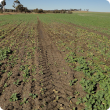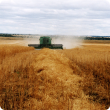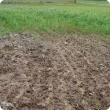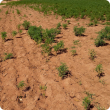Crops
The Department of Primary Industries and Regional Development continues to support the growth and international competitiveness of all crop industries in Western Australia.
With a 2400 kilometre span from its tropical north to its temperate south, WA supports a broad range of cropping industries from rain-fed winter cereals through to irrigated horticultural crops.
In the 2012/13 year the WA cropping industries exported a total of $3.9 billion which comprised: $3.1 billion of cereals, $859 million of pulses, pastures and oilseeds, $142 million of horticultural crops. The major contributors to these exports were wheat ($2.7 billion), canola ($756 million), barley ($377 million), lupins ($42 million), carrots at $48 million, oats ($12 million), and strawberries at $5.5 million.
Articles
Filter by search
Filter by topic
- Climate, land & water (5) Apply Climate, land & water filter
- (-) Remove Grains filter Grains
- (-) Remove Soil salinity filter Soil salinity
- (-) Remove Soils filter Soils
- Managing soils (3) Apply Managing soils filter
- Soil constraints (2) Apply Soil constraints filter
- Water management (1) Apply Water management filter
- Water (1) Apply Water filter
- Waterlogging (1) Apply Waterlogging filter
- Canola (1) Apply Canola filter
- Field peas (1) Apply Field peas filter
- Lupins (1) Apply Lupins filter
- Pulses (1) Apply Pulses filter









